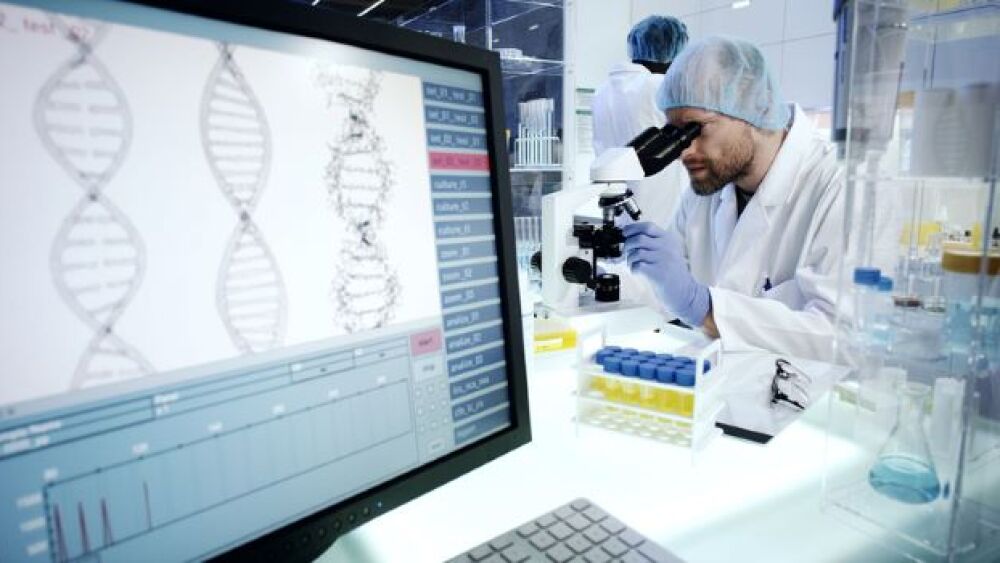Recent scientific papers report errors in CRISPR gene editing linked to ancestry.
Courtesy of Getty Images
Recent scientific papers report errors in CRISPR gene editing linked to ancestry. Specifically, greater genomic diversity, like that found in African populations, makes it less likely that the guide RNA used to target the area to be edited will find the target.
That results in false negatives in cancer in some cases. In others, it results in erroneous edits that can contribute to the onset of cancer.
In 2017, researchers published the first data showing a link between ancestry and off-target effects from CRISPR. This affects not only cancer, but other diseases that are linked to ancestry, such as sickle cell disease. As CRISPR use continues to expand, so can the implications of ancestry bias in CRISPR technology.
CRISPR, Briefly
CRISPR uses a short strand of RNA made from a reference genome to guide the technology to the area to be edited. The usual reference genome, however, is less diverse than genomes from African populations, so errors ensue.
“This is a significant issue,” Luca Pinello, Ph.D., associate member, epigenomics, The Broad Institute, told BioSpace.
Researchers found CRISPR failed to knock out between 2% and 5% of the genes, according to a paper by Sean Misek, Ph.D., postdoctoral associate at The Broad Institute.
The team analyzed 611 CRISPR/Cas9 experiments as part of the Cancer Dependency Map, which involved 18,000 genes in 1,000 cancer cell lines.
Misek and his team found errors in CRISPR guide design across all ancestry groups, cell models and CRISPR guide libraries the researchers evaluated, but errors were 20% more common in cell lines from those of African descent than those of other ancestries.
In a separate paper, Pinello’s lab showed that ancestry-related errors related to genetic variants could modify gene-editing outcomes by causing cutting errors. He said cutting the genome in the wrong place could lead to the development of cancer.
The issue of CRISPR ancestry bias was reported in the scientific literature about five years ago. Still, it has been challenging for researchers without a computational background to identify the variability rates at specific locations in the genome.
“There have been only a few tools developed to make it easy for non-computationalists to design better guides,“ Misek said.
There are several approaches aimed at reducing ancestry bias.
Some scientists have tried designing CRISPR guide libraries that avoid targeting regions with high variability. Those libraries have significantly reduced the problem of ancestry bias, but they have not eliminated it.
Pinello’s team is developing a tool, CRISPRme, that nominates off-target sites by considering single-nucleotide polymorphisms and indel genetic variants.
Editas already released a tool to take genetic variants into account to reduce ancestry-related bias.
Scientists are trying to eliminate ancestry bias in research, too.
Misek noted projects to design a new reference genome that accounts for ancestry variability and multi-ancestry (rather than primarily European) genome-wide association studies.
At the experimental level, the problem sometimes is the need for more awareness, Misek said.
In Pinello’s study, “The SNP-associated off-target that we discovered wasn’t described…in the initial clinical report, so presumably, it was unknown at the time of the clinical trial design,” he said.
At the same time, a dearth of computational methods to identify off-target sites made it easy for scientists to fail to consider genetic variants in the off-target nomination process.
“We need to do a better job accounting for ancestry and genetic diversity in basic science,” Misek said.
Adding more African cell lines to the databases may help resolve the issue, but more than that is needed.
As awareness of the issue grows, the development of variant-aware off-target assessment will become routine soon, Pinello said. That’s because the experimental methods to validate off-target assessment tools are readily available.






